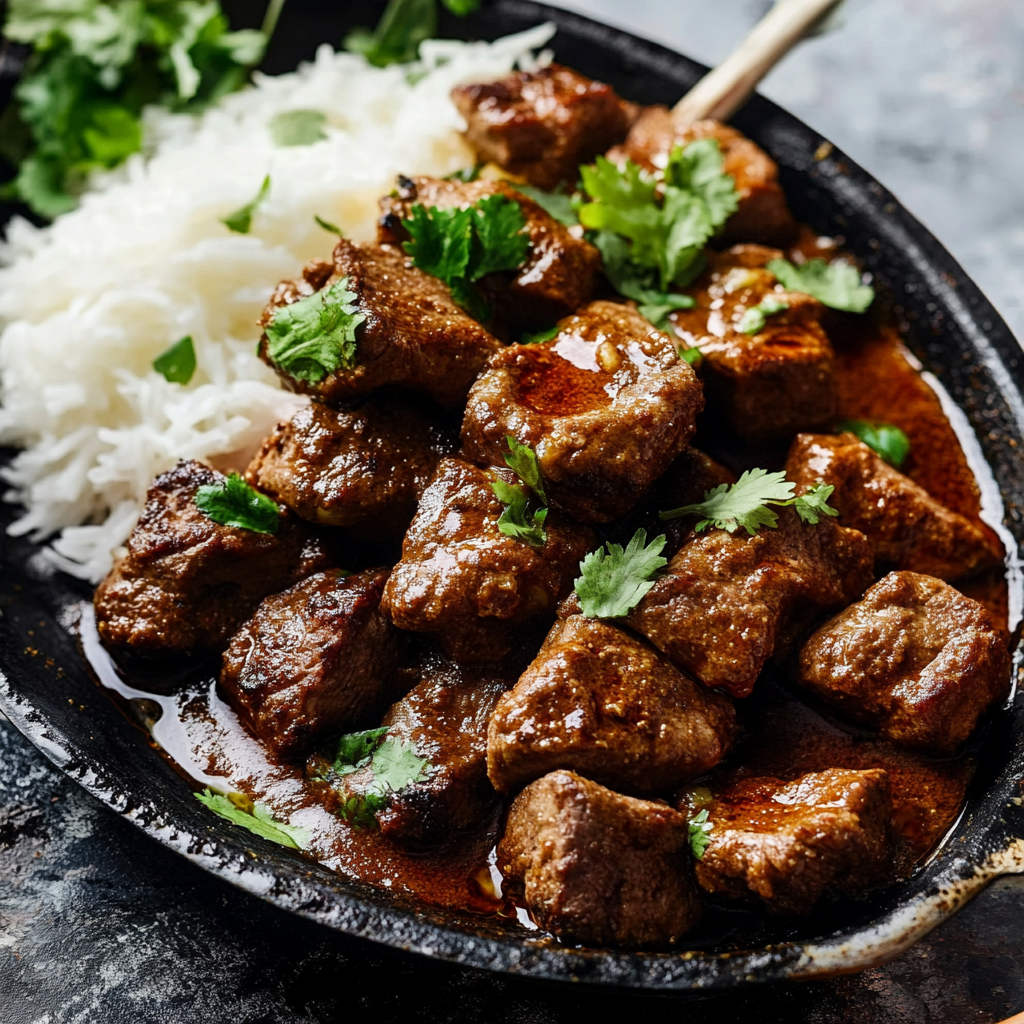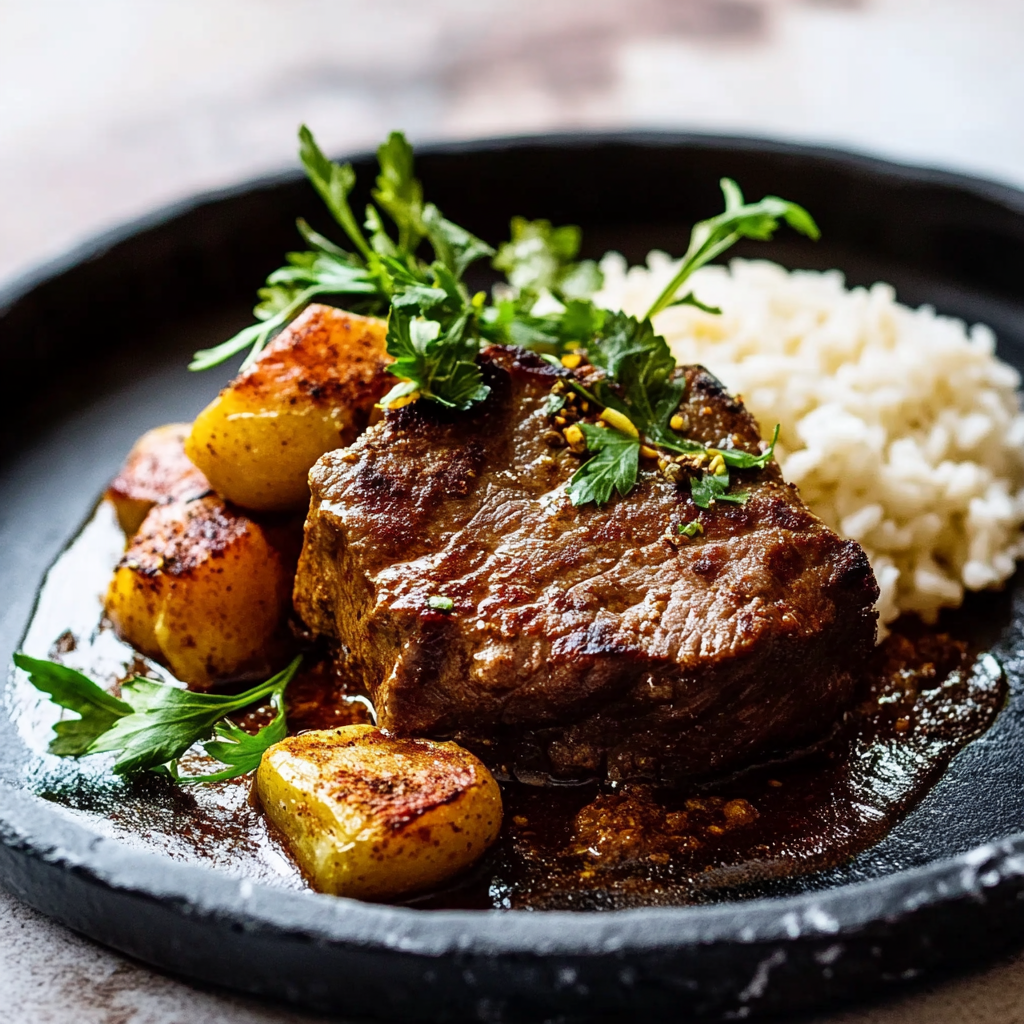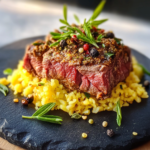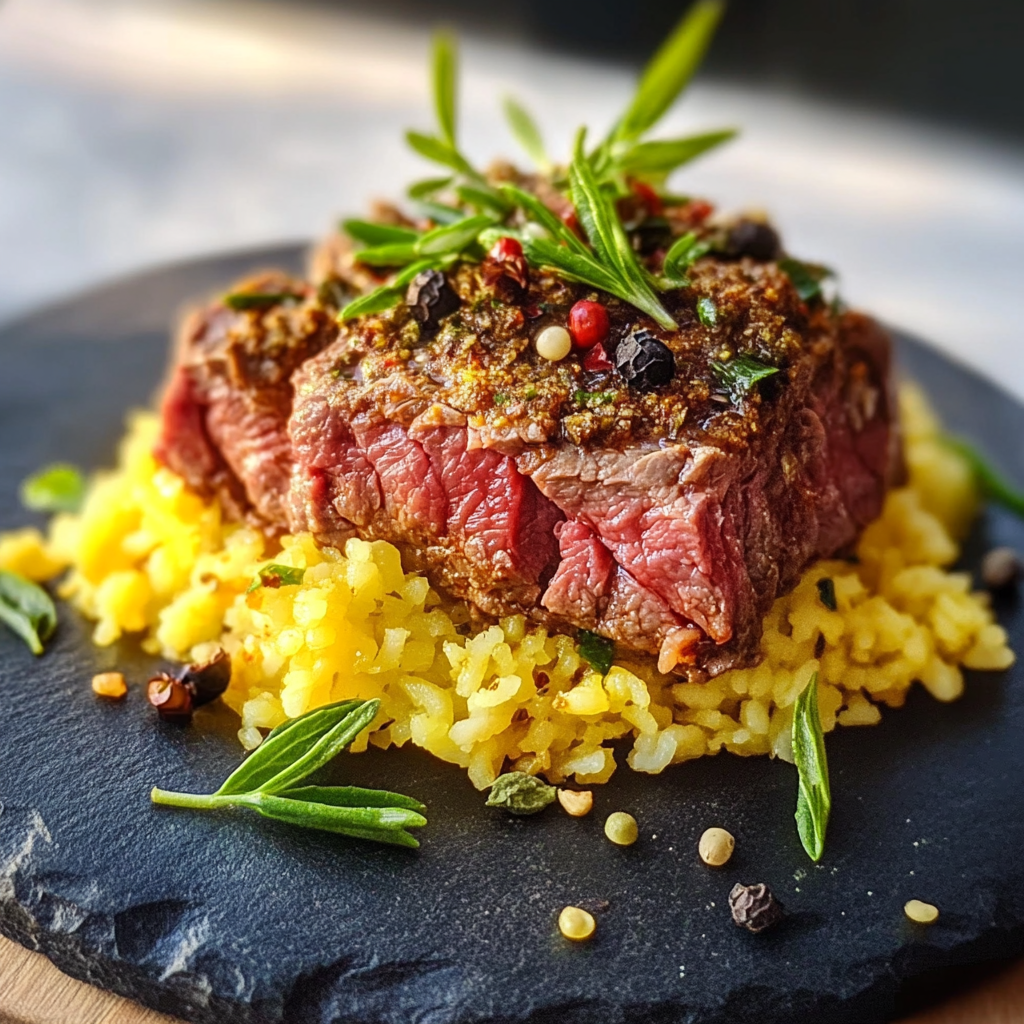Have you ever wondered how a simple piece of meat can transform into an unforgettable meal? Picture this: succulent cuts marinated in a vibrant mix of spices that dance across your palate, releasing aromas that fill the air and invite everyone to the table. Traditional meat recipes with spices not only bring bold flavors but also create memories worth savoring.
As you delve into these time-honored dishes, you’ll discover how centuries-old techniques and regional ingredients come together to craft hearty meals perfect for family gatherings or cozy dinners. Whether you’re celebrating a special occasion or simply indulging in the comfort of home-cooked food, these recipes promise to elevate your culinary experience and leave your guests asking for seconds.
Why You’ll Love This Traditional meat recipes with spices
Rich Flavor Profiles: One of the main attractions of traditional meat recipes with spices is their ability to create rich and complex flavor profiles. By using a variety of herbs and spices, each dish bursts with unique tastes that can transport you to different regions around the world. The careful balance of flavors makes every bite an adventure.
Health Benefits: Many spices used in these traditional recipes offer health benefits beyond their delightful taste. Ingredients like garlic, turmeric, and ginger have anti-inflammatory properties and can boost your immune system. By incorporating these healthful ingredients into your meals, you not only enjoy great food but also promote wellness.
Culinary Versatility: Traditional meat recipes can be adapted to suit various dietary preferences and occasions. Whether you’re grilling outdoors during summer barbecues or preparing a slow-cooked stew for winter comfort, these dishes can be tailored to match any season or celebration. Explore endless variations that cater to friends and family alike.
Connection to Heritage: Preparing traditional meat dishes often connects us to our roots and cultural heritage. These recipes have been passed down through generations, carrying stories and traditions within them. When you make these meals, you’re not just cooking; you’re honoring history while creating new memories with loved ones.
Ingredients
Here’s what you’ll need to make this delicious dish:
- Boneless Beef Chuck Roast: This cut is ideal due to its rich flavor; choose a well-marbled roast for best results.
- Onions: Use sweet onions for a touch of sweetness; they will caramelize beautifully during cooking.
- Garlic Cloves: Fresh garlic enhances the overall flavor profile; don’t hesitate to add extra cloves if you love garlic.
- Ground Cumin: This spice adds earthy warmth; opt for freshly ground cumin if possible for enhanced aroma.
- Coriander Powder: Offers citrusy undertones that complement the dish perfectly; it’s essential for depth of flavor.
For the Marinade:
- Olive Oil: Use high-quality extra virgin olive oil for marinating; it helps tenderize the meat while adding richness.
- Lemon Juice: Freshly squeezed lemon juice brightens flavors; it also acts as a natural tenderizer for the meat.
The full ingredients list, including measurements, is provided in the recipe card directly below.
How to Make Traditional meat recipes with spices
Follow these simple steps to prepare this delicious dish:
Marinate the Meat: Begin by combining olive oil, lemon juice, minced garlic, ground cumin, coriander powder, salt, and pepper in a bowl. Coat the beef chuck roast thoroughly in this marinade and refrigerate it for at least two hours or overnight for maximum flavor absorption.
Sear the Meat: Preheat a large skillet over medium-high heat. Add a drizzle of olive oil and sear the marinated beef on all sides until browned (about 4-5 minutes per side). This step locks in moisture while developing deep flavors.
Add Onions and Simmer: Remove the beef from the skillet and set it aside momentarily. In the same skillet, add sliced onions and sauté until they become translucent (approximately 5 minutes). Then return the seared beef to the pan along with any remaining marinade.
Add Liquid for Braising: Pour in enough beef broth or water until it covers about halfway up the sides of the roast. Bring it to a gentle simmer before covering tightly with a lid.
Braise Until Tender: Lower your heat to maintain a gentle simmer. Cook covered for about two hours or until fork-tender—this slow cooking allows those rich flavors from all ingredients to meld beautifully together.
Serve and Enjoy!: Once cooked through, slice against the grain before serving alongside rice or crusty bread. Drizzle some pan juices over each slice for added flavor—enjoy this hearty meal!

Tips and Tricks
Here are some helpful tips to ensure the best results for your dish:
Proper Marination Time: Allowing enough time for marination is crucial as it significantly enhances flavor penetration into the meat—aim for at least two hours or overnight if possible.
Choosing Cuts Wisely: Selecting cuts like chuck roast ensures tenderness after slow cooking—avoid lean cuts as they may end up dry during lengthy cooking processes.
Controlling Heat Levels: When searing your meat initially on high heat creates good browning effects but remember not too high! Adjust accordingly so as not burn anything while still achieving desired results.
Tenderizing Techniques: Using acidic components like lemon juice or vinegar not only adds brightness but also helps tenderize proteins effectively—consider experimenting with different acids!
Serving Suggestions: Pairing perfectly prepared meats alongside fresh salads or seasonal vegetables enhances overall meal appeal—it balances richness beautifully without overwhelming flavors!
By following these guidelines closely while preparing traditional meat recipes with spices will ensure delectable outcomes every time!
Mistakes to avoid
Over-seasoning your meat
Using too many spices can overwhelm the natural flavors of your meat. Traditional meat recipes with spices should enhance the dish, not mask it. Start with a small amount of seasoning and gradually add more if needed. A common guideline is to use one tablespoon of spice per pound of meat. Taste as you go, and remember that some spices, like salt, can intensify during cooking, so be cautious. Balance is key; let the quality of your meat shine through.
Not marinating long enough
Marination is vital in traditional meat recipes with spices for developing flavor and tenderness. Many recipes recommend marinating for at least two hours, but for tougher cuts, consider marinating overnight. This allows the spices to penetrate deeply, ensuring a delicious outcome. Avoid the mistake of thinking a quick soak will suffice; give your meat ample time to absorb the flavors. Always keep marinated meats refrigerated to prevent bacterial growth.
Ignoring resting time
Resting your meat after cooking is crucial for juicy results. When you cut into freshly cooked meat, juices flow out, leading to dryness. Allow your meat to rest for at least 10-15 minutes before slicing. This resting period lets the juices redistribute throughout the meat, enhancing flavor and texture. Skipping this step often results in disappointing dishes regardless of how well-seasoned they are with traditional meat recipes with spices.
Cooking at inconsistent temperatures
Consistent temperature control is essential for perfect cooking results in traditional meat recipes with spices. Fluctuating temperatures can lead to uneven cooking and result in tough or dry meat. Use a reliable thermometer to monitor internal temperatures and ensure even cooking throughout. For most meats, aim for an internal temperature between 145°F and 165°F depending on the type and cut. Preheat your oven or grill properly before placing your meat inside.

FAQs
What are traditional meat recipes with spices?
Traditional meat recipes with spices refer to methods of preparing meats using a variety of herbs and spices that reflect cultural culinary practices. These dishes often emphasize robust flavors achieved through marination and careful seasoning techniques.
How do I choose the right spices for my traditional meat recipe?
Choosing the right spices involves considering both the type of meat and desired flavor profile. For example, bold meats like lamb pair well with strong spices such as cumin or coriander, while lighter meats like chicken may benefit from milder herbs like thyme or rosemary.
Can I substitute fresh herbs in traditional meat recipes with spices?
Yes, you can substitute fresh herbs with dried ones in traditional meat recipes with spices; however, remember that dried herbs have a stronger flavor concentration. A general rule is to use one-third of the amount when substituting dried herbs for fresh ones.
What cooking techniques enhance traditional meat recipes with spices?
Grilling, roasting, and braising are excellent techniques that enhance traditional meat recipes with spices. Each method allows different flavors to develop while properly showcasing the aromas from your chosen spice blends during cooking.
How can I adjust spice levels in my recipe?
To adjust spice levels in traditional meat recipes with spices, start by adding small amounts incrementally while tasting throughout the process. If you find it too spicy, balance it by adding sweetness (like honey) or acidity (like vinegar) to mellow out intense flavors effectively.
Serving Suggestions
This Traditional meat recipes with spices is versatile and pairs wonderfully with:
Steamed Rice
Serve your traditional meat dish over a bed of fluffy steamed rice. The rice absorbs the rich flavors of the spices, creating a delightful combination. White or brown rice works well, so choose according to your preference. For added flavor, consider cooking the rice in broth or adding a few spices during cooking.
Grilled Vegetables
Accompany your traditional meat recipes with spices with a side of grilled vegetables. Bell peppers, zucchini, and eggplant enhance the meal with their smoky flavors. Simply toss them in olive oil and season with salt, pepper, and herbs before grilling. This adds a fresh element to the dish while balancing the richness of the meat.
Flatbreads
Serve warm flatbreads alongside your traditional meat recipes with spices for a complete experience. Soft naan or pita bread allows you to scoop up bite-sized pieces of meat and sauce. This not only enhances the texture but also adds a comforting element that complements the robust flavors.
Salad with Citrus Dressing
A refreshing salad drizzled with citrus dressing can cut through the richness of traditional meat dishes. Use mixed greens, cherry tomatoes, and cucumbers for crunch. A simple dressing made from lemon juice and olive oil brings brightness to each bite, making your meal well-rounded and enjoyable.

FAQs
What are some common spices used in traditional meat recipes?
Traditional meat recipes with spices often feature cumin, coriander, paprika, cinnamon, and black pepper. These spices add depth and complexity to the flavor profile of the dish. Depending on regional variations, other spices like cardamom or turmeric may also be included for an aromatic touch.
How do I make my meat tender in traditional recipes?
To achieve tenderness in traditional meat recipes with spices, consider marinating the meat beforehand. Use acidic ingredients like yogurt or vinegar combined with spices to help break down tough fibers. Cooking low and slow also ensures that the meat becomes tender while absorbing all those delicious flavors.
Can I use different types of meat for these recipes?
Absolutely! Traditional meat recipes with spices can be adapted for various meats such as chicken, beef, lamb, or pork. Each type will bring its unique taste and texture to the dish. Just remember to adjust cooking times based on the specific cut of meat you choose for optimal results.
Are there vegetarian alternatives for these traditional recipes?
Yes! You can easily substitute meat with hearty vegetables or plant-based proteins like tofu or tempeh in traditional meat recipes with spices. Using ingredients like mushrooms or eggplant can mimic meaty textures while absorbing all the wonderful spice flavors present in these dishes.
Conclusion
In summary, traditional meat recipes with spices offer vibrant flavors that can be enjoyed in various ways. Pairing these dishes with steamed rice enhances their richness while grilled vegetables add freshness. Warm flatbreads allow for easy enjoyment of sauces and meats alike, while salads provide a refreshing contrast. Feel free to experiment with different meats or vegetarian options to suit your dietary preferences while maintaining those rich spice profiles. With proper techniques such as marinating and low-temperature cooking, you can ensure tenderness and depth in every bite. Enjoy exploring these timeless flavors in your own kitchen!

Traditional Meat Recipes with Spices
- Total Time: 2 hours 15 minutes
- Yield: Serves approximately 6 people 1x
Description
Experience the rich and comforting flavors of this traditional meat recipe featuring a tender boneless beef chuck roast, marinated in a vibrant blend of aromatic spices. The slow-cooking process melds these flavors beautifully, resulting in a hearty dish that is perfect for family gatherings or special occasions. Serve it alongside fluffy steamed rice or grilled vegetables for a well-rounded meal that will leave your guests asking for more.
Ingredients
- 2 lbs boneless beef chuck roast
- 2 medium sweet onions, sliced
- 4 cloves garlic, minced
- 1 tablespoon ground cumin
- 1 tablespoon coriander powder
- 1/4 cup olive oil
- 1/4 cup freshly squeezed lemon juice
- Salt and pepper to taste
Instructions
- 1. Marinate the meat: In a bowl, combine olive oil, lemon juice, garlic, cumin, coriander, salt, and pepper. Coat the beef chuck roast thoroughly with the marinade. Cover and refrigerate for at least 2 hours or overnight.
- 2. Sear the meat: Preheat a large skillet over medium-high heat. Add olive oil and sear the marinated beef on all sides until browned (about 4-5 minutes per side). Remove the beef and set aside.
- 3. Cook onions: In the same skillet, sauté sliced onions until translucent (approximately 5 minutes). Return the seared beef to the pan with any remaining marinade.
- 4. Braise: Add enough broth or water to cover halfway up the sides of the roast. Bring to a gentle simmer, cover tightly with a lid, and cook on low heat for about 2 hours or until fork-tender.
- 5. Serve: Slice against the grain and serve with rice or crusty bread, drizzled with pan juices.
- Prep Time: 15 minutes
- Cook Time: 120 minutes
- Category: Main
- Method: Braising
- Cuisine: Traditional
Nutrition
- Serving Size: 1 cup (240g)
- Calories: 450
- Sugar: 2g
- Sodium: 200mg
- Fat: 27g
- Saturated Fat: 8g
- Unsaturated Fat: 17g
- Trans Fat: 0g
- Carbohydrates: 10g
- Fiber: 1g
- Protein: 40g
- Cholesterol: 100mg

